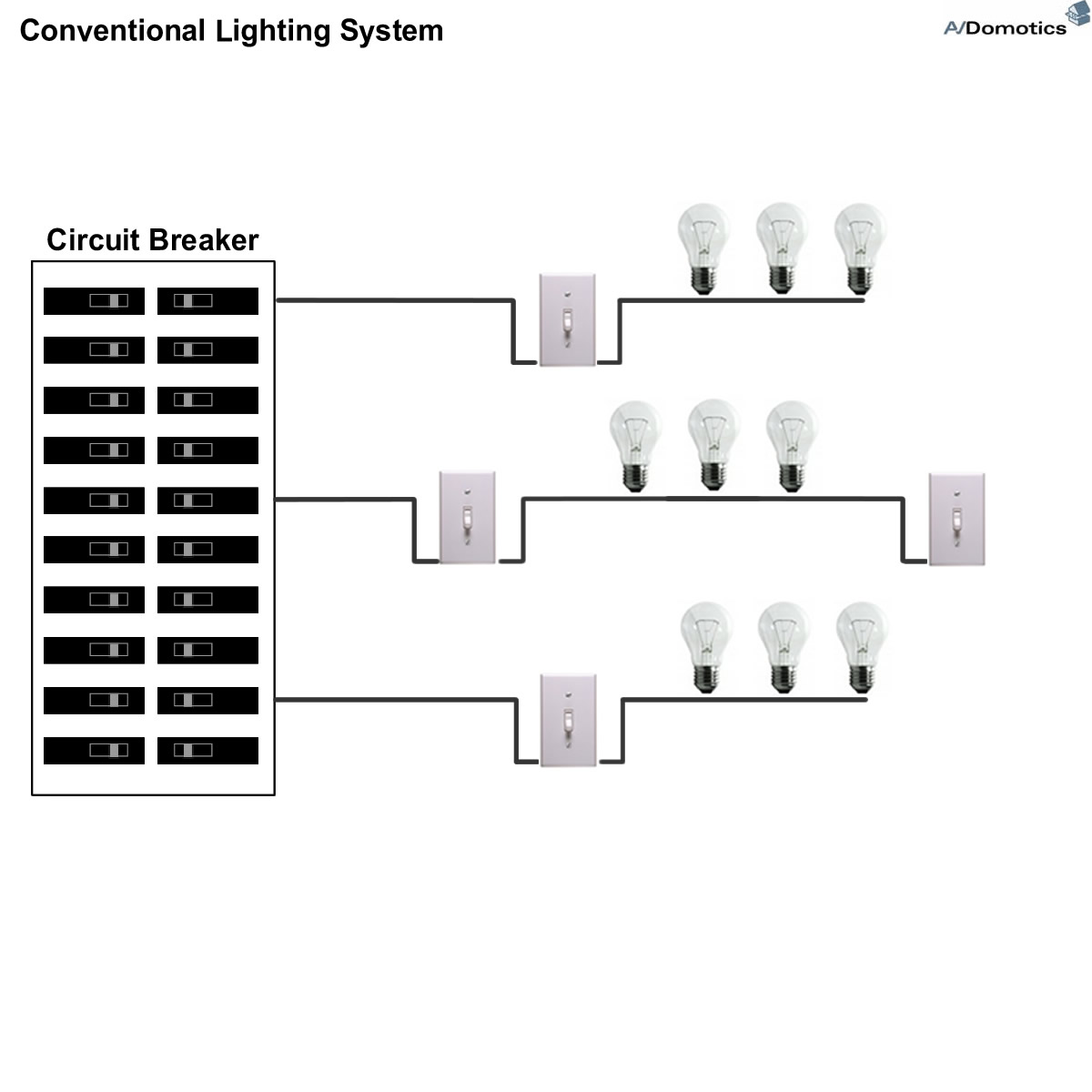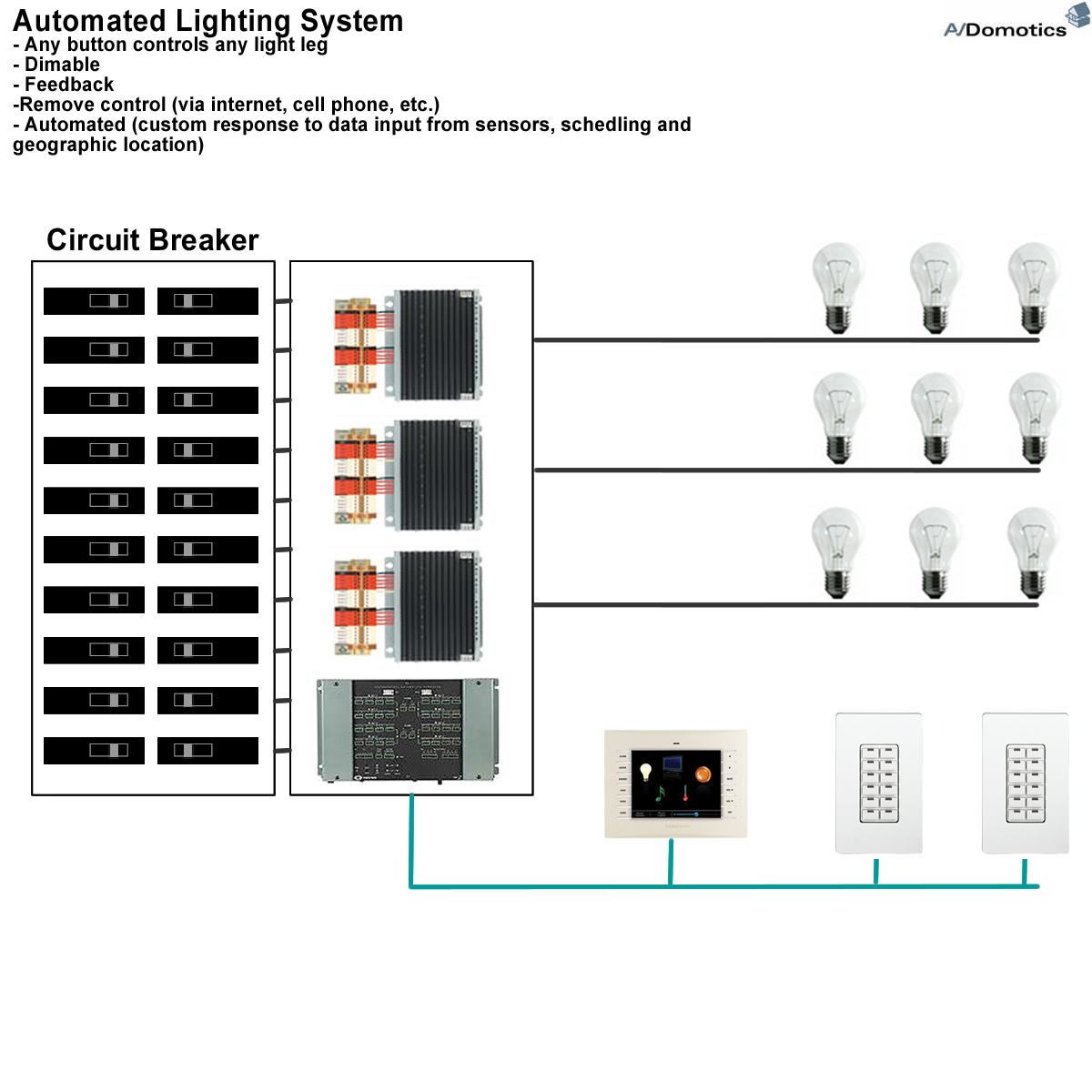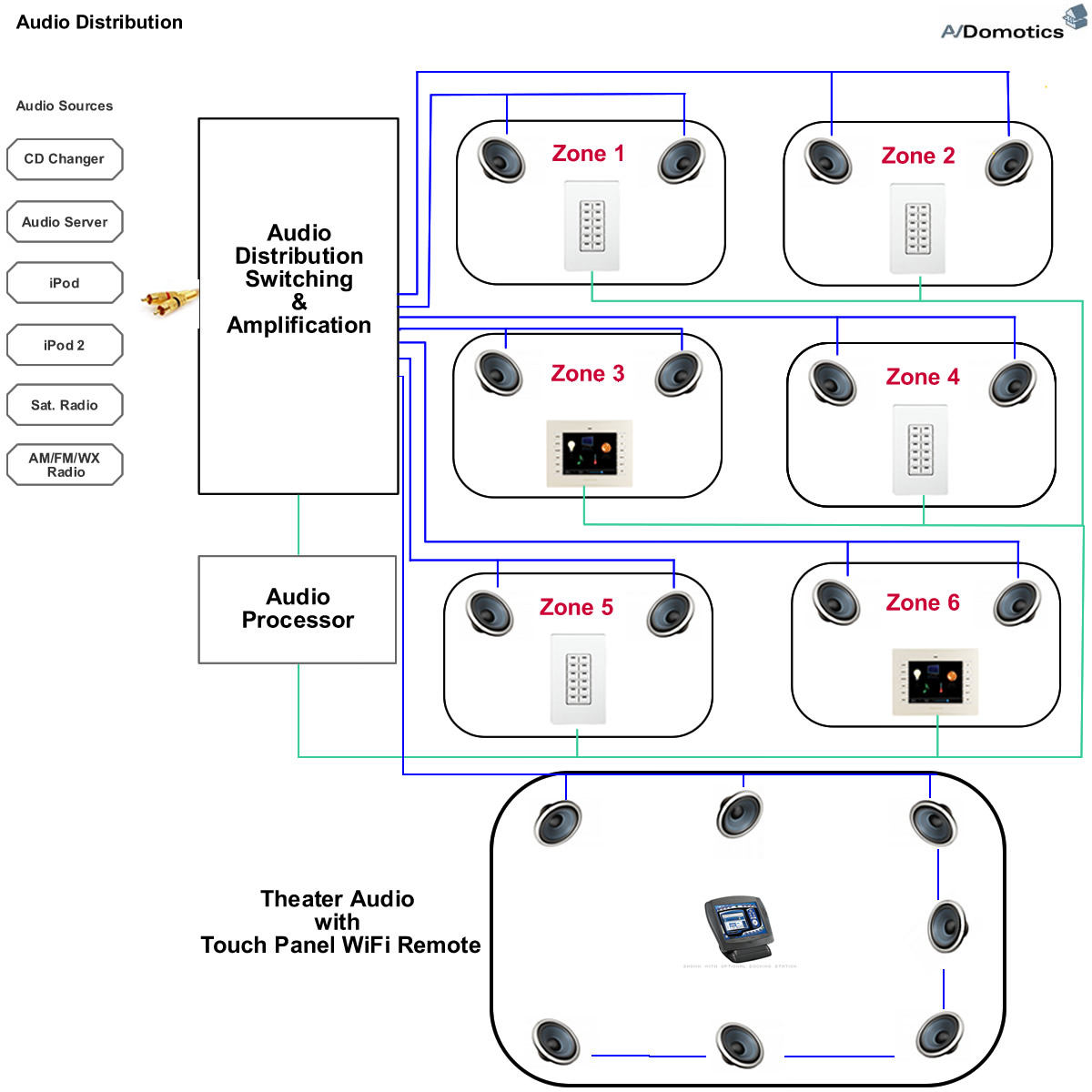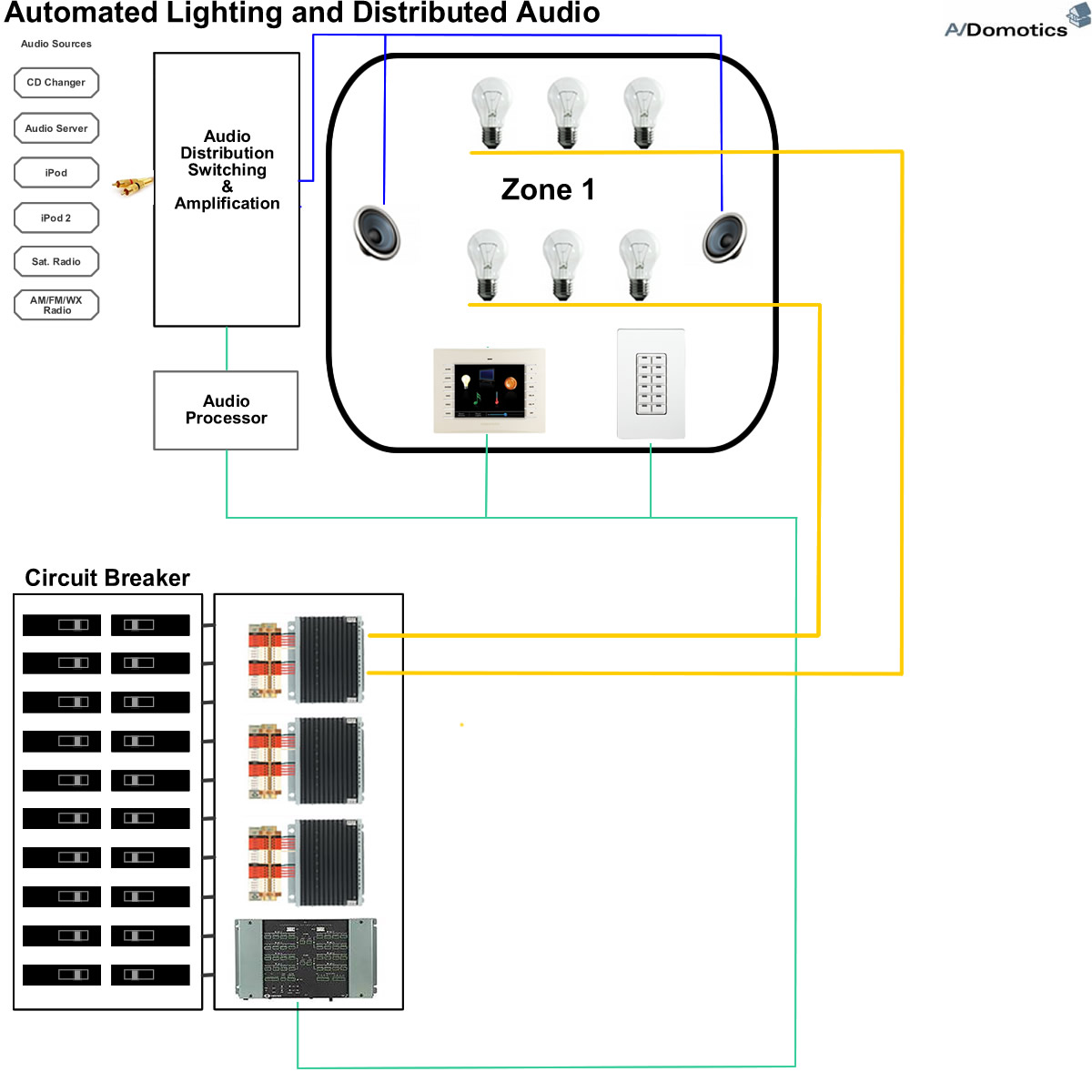AVDomotics:
Conventional Lighting versus Centralized Automation and Distribution Lighting
Below is a simple illustrative comparison of a conventional lighting system and a centralized automated solution. In a conventional system, each load leg or circuit is controlled by at least one switch. In some cases, two or more switches may control any given circuit often referred to as a two or three way switch. With this method, a light or series of lights on one circuit can be turned on or off from two different locations. At the top and bottom of stairs, for example.

In a centralized automated lighting system, every keypad or control device controls every circuit. Whether the control device is a keypad, touch panel LCD or remote, any given electrical circuit can be controlled by any given control device. In addition, automated functionality is easily implemented. For example, when a light is turned on, it can slowly fade on over a predetermined amount of time. The same button may, perhaps turn on multiple other light circuits as well.

Here are some other typical examples:
-Automatically turn on the porch lights at dusk and off at dawn based on the geographical location of the home (changes from season to season)
-At night, turn on a dimly lit pathway from the bedroom to the bathroom when the "Bathroom" button is pushed on a keypad located next to the bed.
-Turn on/off all the lights in the home or business with one button press.
The options and customization are limitless. Here is another illustration from Crestron in PDF format (7.9MB).
Audio and Visual
Distributed audio and video enables a multitude of rooms or "Zones" to take advantage of centrally located audio or video equipment. Each zone is can be controlled independently via control devices such as keypads, LCD touch panels and remotes just as the automated lighting system does.

Audio, Visual and Lighting
Bringing the lighting and distributed audio and video together provides global automated control of an entire home, commercial or other space. The same control devices used to control the lighting can control the audio and visual components of a distributed audio and visual system. Integration with drapes, security systems, HVAC and more allows control of all aspects of the space from any number and combination of control devices... even from remote locations via the internet!

Here are some more examples:
-You are watching a movie in your home theater and you are alerted to a visitor at your front door. With a touch of a button on your hand-held LCD touch panel remote, the movie pauses, the lights fade on in the theater and additional lights fade on leading a path to the front door. On the hand-held LCD touch panel remote a window automatically opens showing who is at the front door via a security camera. If desired, you can speak with your visitor via the hand-held remote and/or remotely unlock the door.
-You are having a super bowl party at your house. With a touch a button, all TVs in the house are tuned to your desired sports channel, the sound level is set to a "medium" level and the lights in predetermined areas of the house are turned on to 90% and other lights in "off limit" locations are turned off. All control devices are deactivated to prevent tampering with the system by your guests and can only be re-activated by you.
-You have a south facing window and during the late afternoon hours between June and August the sun's intensity is overwhelming. At your request, the shades on this particular window can automatically adjust to block out the sun during these months and as determined by the sun's position based on your home's geographical position and time of day.
-You are returning home from travels on a long tiring business trip. When you arrive at the airport, you can connect to your home via cell phone or internet and set the hot tub and AC to a desired temperatures and turn on the driveway and entry lights.
As you can see, with automation solutions from AVDomotics, the options are virtually limitless.